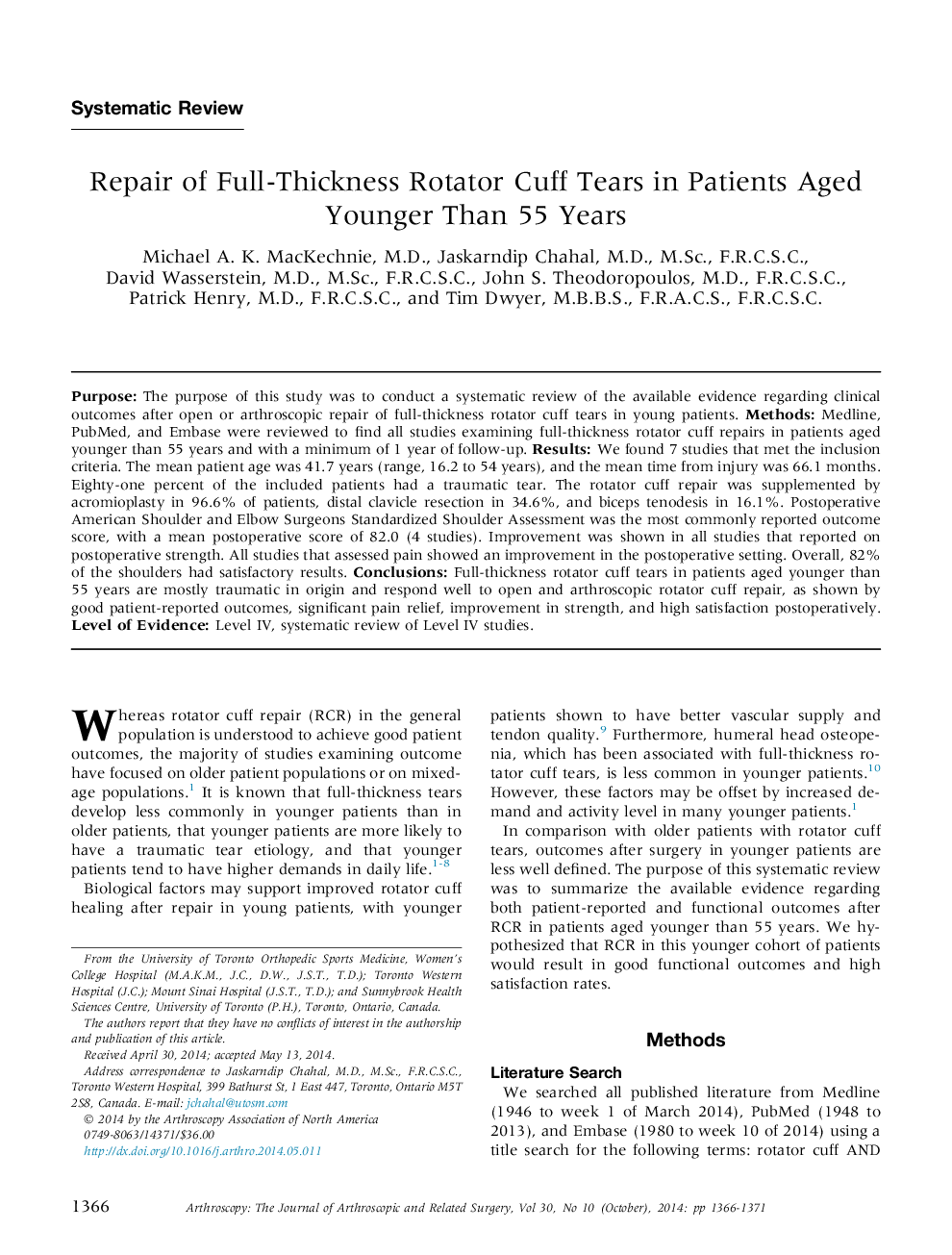| Article ID | Journal | Published Year | Pages | File Type |
|---|---|---|---|---|
| 4042912 | Arthroscopy: The Journal of Arthroscopic & Related Surgery | 2014 | 6 Pages |
PurposeThe purpose of this study was to conduct a systematic review of the available evidence regarding clinical outcomes after open or arthroscopic repair of full-thickness rotator cuff tears in young patients.MethodsMedline, PubMed, and Embase were reviewed to find all studies examining full-thickness rotator cuff repairs in patients aged younger than 55 years and with a minimum of 1 year of follow-up.ResultsWe found 7 studies that met the inclusion criteria. The mean patient age was 41.7 years (range, 16.2 to 54 years), and the mean time from injury was 66.1 months. Eighty-one percent of the included patients had a traumatic tear. The rotator cuff repair was supplemented by acromioplasty in 96.6% of patients, distal clavicle resection in 34.6%, and biceps tenodesis in 16.1%. Postoperative American Shoulder and Elbow Surgeons Standardized Shoulder Assessment was the most commonly reported outcome score, with a mean postoperative score of 82.0 (4 studies). Improvement was shown in all studies that reported on postoperative strength. All studies that assessed pain showed an improvement in the postoperative setting. Overall, 82% of the shoulders had satisfactory results.ConclusionsFull-thickness rotator cuff tears in patients aged younger than 55 years are mostly traumatic in origin and respond well to open and arthroscopic rotator cuff repair, as shown by good patient-reported outcomes, significant pain relief, improvement in strength, and high satisfaction postoperatively.Level of EvidenceLevel IV, systematic review of Level IV studies.
